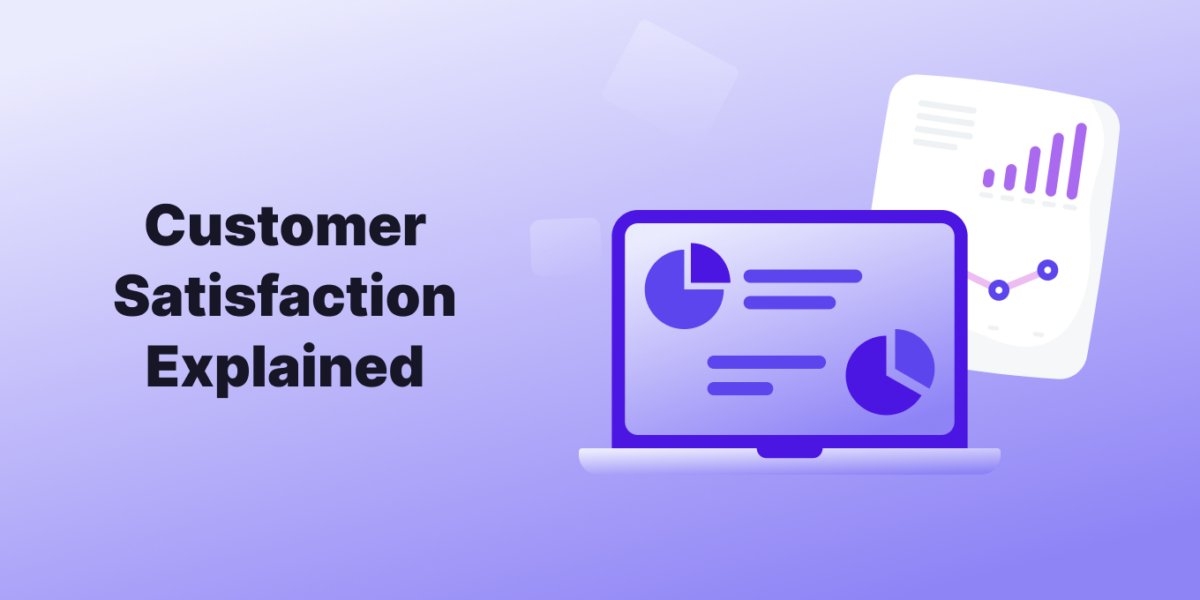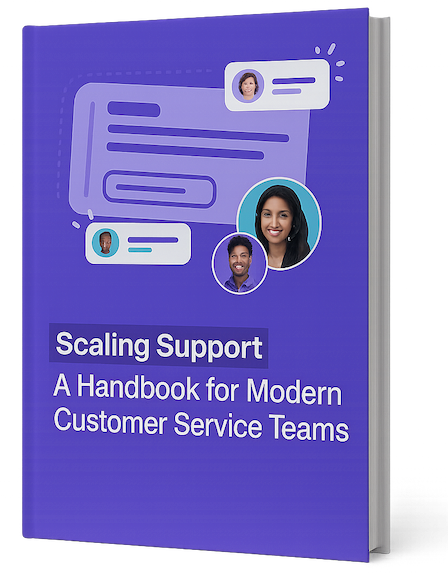To say that customer satisfaction is important is an understatement. It’s a necessity. Over 80% of marketers view customer satisfaction as the main area of competition in their industry, while almost 60% of customers switch brands after several bad experiences.
Customer satisfaction is the best way to get customers to stick with you and eventually become brand advocates. Every business should think of customer satisfaction as an important part of doing business and work to improve it.
In this post, we discuss what customer satisfaction is, why it’s important, and how to measure and improve the customer experience within your business.
What is Customer Satisfaction?
Customer satisfaction is a measure of how well a company meets customer expectations. In other words, it’s how happy customers are with your brand.
Customer satisfaction is influenced by a number of factors:
- The company’s products or services
- The shopping experience, or customer journey
- The level of customer support
- The entire customer experience
Why is Customer Satisfaction Important?
As the lifeblood of the business, making sure customers are happy is absolutely critical to the company’s bottom line and continued growth. In fact, customer satisfaction can literally spell the difference between healthy profits and bankruptcy.
Customer satisfaction is important because:
It builds customer loyalty
A loyal customer base is only possible if you offer good products, coupled with excellent service. This is especially true in the era of increased competition and online shopping, where customers can shop from home and easily switch brands. Customer satisfaction is what turns a random shopper into a loyal customer.
It encourages repeat business
A satisfied customer is more likely to keep shopping with the same brand. This is critical since it costs more to attract a new customer than to retain an existing one.
It enhances the customer lifetime value
The customer lifetime value refers to the total amount of money a customer is estimated to spend in your business during their lifetime. The CLV can be influenced by a number of outside factors, such as the customer’s spending power and the state of the economy. However, high customer satisfaction is a major driver of CLV.
It enables cross-selling
When a customer is satisfied with your brand and service, they are more open to cross-selling or upselling. This is particularly true for industries with related product lines, such as consumer electronics. The more satisfied customers are, the more likely they are to invest in your brand’s ecosystem.
It boosts your brand reputation
Brand rep is an important aspect of business today. In the age of social media, online reviews, and Yelp!, positive feedback can be just as important as online advertising. A satisfied customer can turn into a brand advocate, while a poorly treated customer can become one of your biggest detractors online.
It reflects company performance
Customer satisfaction is a reflection of your brand’s performance. It is an indicator of the quality of your products, the level of customer service you provide, and how well your customer experience is doing.
What Does It Take To Satisfy The Customer?
There are five processes at play when it comes to satisfying customers:
1. Customer query or issue
A customer inquiry is typically one of two things:
- They have a question about the product
- They have an issue with said product or service
2. Brand response
This refers to the time it takes for the company to respond to the customer. If it’s a call, it can be how long the customer was on hold: if it’s a chat or email, it’s the amount of time it took to reply. The lower the response time, the better.
3. Action
This is when the query or issue is actually acted upon. Like the response time, the faster the corrective action or ticket resolution, the better for customer satisfaction.
4. Followup
When the issue is not immediately resolved, the business has to reach out to the customer at a later date to inform of the corrective action. Faster follow-ups also result in higher customer satisfaction.
5. Customer feedback
This is when the customer verifies that the query or issue has been resolved. Companies can typically follow this up with a survey form to gauge feedback and the effectiveness of the response and action times.
How to Measure Customer Satisfaction
There are different key performance indicators (KPIs) you can use to evaluate customer satisfaction. These include:
CSAT surveys
Customer satisfaction surveys, also known as CSATs, are short surveys provided to customers at the end of a transaction. They typically consist of a few questions that inquire about the agent and the brand’s performance.
Sample questions include:
- Yes or no questions
- A rating level for different areas
- The likelihood of them doing a repeat purchase, or recommending the brand
NPS Surveys
Net Promoter Score surveys aim to determine whether the customer will become a brand advocate (promoter), a detractor, or remain passive.
The survey uses a 1-10 rating scale for a number of areas, which will gauge the chances of their becoming a promoter or a negative voice.
CS metrics
Customer service uses different KPIs to measure the performance of individual agents or the team as a whole. These metrics can include:
- Call resolution time
- Ticket turnaround time
- Issues facing the highest number of calls or tickets
Qualitative research
Some companies also invest in customer panel surveys and research. The selection of customers can be based on:
- Random (to present a general bias-free view)
- Loyal customer base
- Highest CLV
5 Ways to Improve Customer Satisfaction
Improving customer satisfaction is a blend of having the right customer service skills, an investment in customer care, and providing the right tools and software.
1. Ensure you have the right customer service skills
Customer service skills are the set of skills needed in order to communicate effectively with customers, troubleshoot issues, and resolve complaints. The end goal of these skills is to ensure customer satisfaction.
Customer service skills can be divided into three main groups: effective communication, problem solving, and empathy.
To know more, read our entry: A List of Essential Customer Service Skills.
2. Invest in customer care
Customer satisfaction is largely shaped by the customer experience. In order to ensure proper customer care throughout the journey, you may want to consider hiring a customer success manager to oversee the entire customer experience, and not just the limited role played by the customer service department.
3. Implement KPIs
Roll out some metrics to evaluate the level of customer satisfaction. For customers, these can be CSATs or NPS surveys. For your CS team, you can implement commonly used KPIs to keep them on their toes and ensure effective and timely issue resolution.
4. Grow your feedback channels
One of the causes of poor customer satisfaction is having limited customer support channels. Not only does it result in a bottleneck, it can lead to tired, overworked agents who deliver poor customer service.
Avoid this by:
- Making sure you have alternative channels for customer support, whether it’s a social media page, email or live chat.
- Automating part of the CS process to reduce workload and waiting times.
- Using a customer knowledge base or self-help portal, to allow customers to resolve minor issues on their own.
- Providing an internal knowledge base for agents so they quickly and efficiently resolve common issues.
5. Incentivize feedback
- Implement surveys to gather feedback from your longest-running or highest CLV customers and make them feel valued.
- Provide offers or discounts to get customers to answer surveys
- Enact a rewards program for loyal customers
- Respond to feedback on social media and review sites, and repost positive feedback from valued customers.


